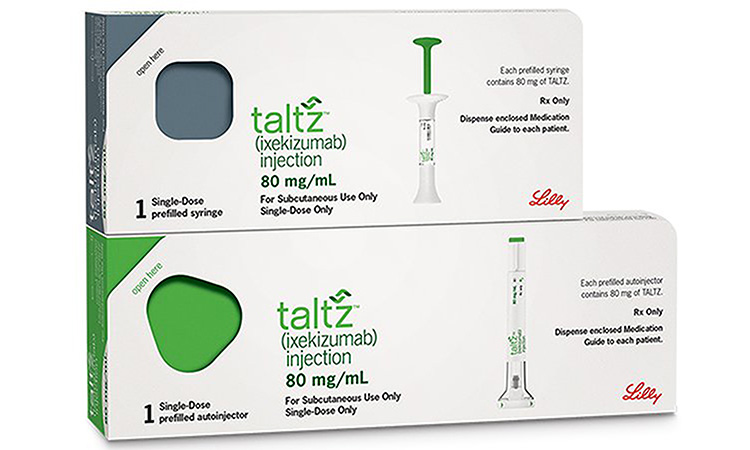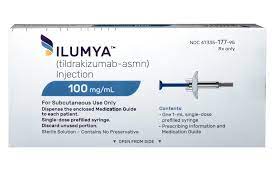Taltz (ixekizumab) vs Ilumya (tildrakizumab)
Taltz (ixekizumab) vs Ilumya (tildrakizumab)
Taltz (ixekizumab) and Ilumya (tildrakizumab) are both biologic medications used to treat moderate to severe plaque psoriasis, but they target different proteins involved in the inflammatory process. Taltz works by blocking interleukin-17A (IL-17A), a cytokine that plays a key role in the inflammation and development of psoriatic plaques, and is also approved for the treatment of psoriatic arthritis. Ilumya targets interleukin-23 (IL-23), another important cytokine in the pathogenesis of psoriasis, and is known for its longer dosing intervals after the initial loading doses. When deciding between the two, considerations include the specific indications, dosing schedule, potential side effects, and how the medication's action might align with an individual's unique medical profile and treatment goals.
Difference between Taltz and Ilumya
| Metric | Taltz (ixekizumab) | Ilumya (tildrakizumab) |
|---|---|---|
| Generic name | Ixekizumab | Tildrakizumab |
| Indications | Plaque psoriasis, Psoriatic arthritis, Ankylosing spondylitis | Plaque psoriasis |
| Mechanism of action | Interleukin-17A antagonist | Interleukin-23 antagonist |
| Brand names | Taltz | Ilumya |
| Administrative route | Subcutaneous injection | Subcutaneous injection |
| Side effects | Infections, Injection site reactions, Upper respiratory tract infections, Nausea | Upper respiratory infections, Injection site reactions, Diarrhea, Headache |
| Contraindications | Hypersensitivity to ixekizumab or any of the excipients | Hypersensitivity to tildrakizumab or any of the excipients |
| Drug class | Monoclonal antibody | Monoclonal antibody |
| Manufacturer | Eli Lilly and Company | Sun Pharma/Merck & Co. |
Efficacy
Efficacy of Taltz (Ixekizumab) for Psoriasis
Taltz (ixekizumab) is a biologic medication approved for the treatment of moderate to severe plaque psoriasis in adults who are candidates for systemic therapy or phototherapy. Ixekizumab works by targeting interleukin-17A (IL-17A), a cytokine that plays a key role in the pathogenesis of psoriasis. Clinical trials have demonstrated that Taltz can lead to significant skin clearance. In these trials, many patients achieved a 75% reduction in the Psoriasis Area and Severity Index (PASI 75) score, and some even reached a 90% reduction (PASI 90) or complete clearance (PASI 100) within 12 weeks of treatment initiation. The efficacy of Taltz in improving the signs and symptoms of psoriasis has been shown to be sustained with continued treatment.
Efficacy of Ilumya (Tildrakizumab) for Psoriasis
Ilumya (tildrakizumab) is another biologic medication approved for the treatment of adults with moderate to severe plaque psoriasis who are candidates for systemic therapy or phototherapy. Tildrakizumab targets IL-23, another key cytokine involved in the inflammatory process of psoriasis. In clinical studies, Ilumya has been shown to be effective in achieving significant skin clearance. A notable proportion of patients treated with Ilumya reached PASI 75 within 12 weeks, with continued improvement observed over time. Some patients achieved PASI 90, and a smaller percentage achieved PASI 100, indicating complete clearance of psoriatic lesions.
Comparison of Efficacy Between Taltz and Ilumya
When comparing the efficacy of Taltz and Ilumya, both medications have shown to be highly effective in the treatment of moderate to severe plaque psoriasis. The choice between the two may depend on various factors, including patient-specific considerations, the presence of comorbidities, and individual responses to treatment. Both Taltz and Ilumya have been involved in head-to-head trials against placebo and other biologics, consistently demonstrating their ability to significantly reduce the extent and severity of psoriatic lesions.
Considerations for Treatment Selection
In selecting an appropriate treatment for psoriasis, healthcare providers consider the efficacy of the medication, along with safety profiles, dosing regimens, patient preferences, and cost. Both Taltz and Ilumya are administered via injection, with Taltz typically given every 2 weeks after initial loading doses and Ilumya administered every 12 weeks after two initial doses at weeks 0 and 4. The sustained efficacy and less frequent dosing may be advantageous for some patients choosing Ilumya, while others may respond better to the mechanism of action of Taltz. Ultimately, the decision on which medication to use should be made collaboratively between the patient and their healthcare provider, taking into account the individual's specific clinical circumstances.
Regulatory Agency Approvals
Taltz
-
European Medical Agency (EMA), European Union

-
Food and Drug Administration (FDA), USA

-
Health Canada

-
Therapeutic Goods Administration (TGA), Australia

Ilumya
-
European Medical Agency (EMA), European Union

-
Food and Drug Administration (FDA), USA

Access Taltz or Ilumya today
If Taltz or Ilumya are not approved or available in your country (e.g. due to supply issues), you can access them via Everyone.org.
How it works

Make an enquiry
Choose the medicine you want to buy, answer a couple of questions, and upload your prescription to speed things up. We’ll get back to you within 24 hours.


Make an enquiry
Choose the medicine you want to buy, answer a couple of questions, and upload your prescription to speed things up. We’ll get back to you within 24 hours.


Breeze through the paperwork
We'll guide you through the required documents for importing unapproved medicine, ensuring you have all the necessary information.


Get a personalized quote
We’ll prepare a quote for you, including medicine costs and any shipping, administrative, or import fees that may apply.


Receive your medicine
Accept the quote and we’ll handle the rest - sourcing and safely delivering your medicine.

Some text on this page has been automatically generated. Speak to your physician before you start a new treatment or medication.
Let's talk
If you have any questions, call us or send us a message through WhatsApp or email:
Contact us




